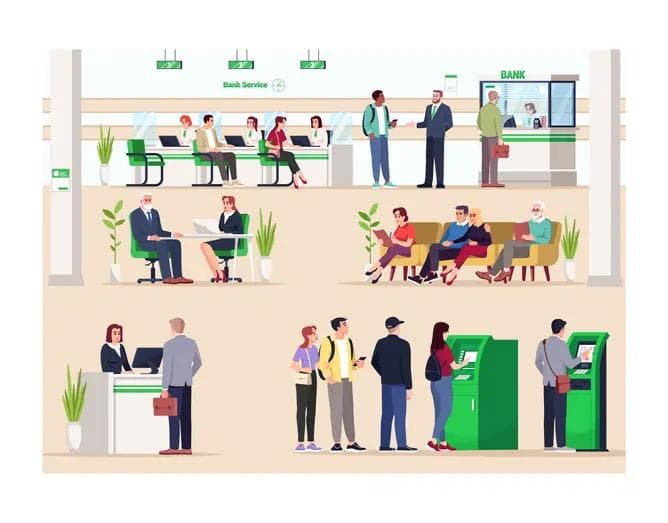Asian shares fall after hawkish Fed minutes
Asian shares fall after hawkish Fed minutes
Published by maria gbaf
Posted on January 6, 2022

Published by maria gbaf
Posted on January 6, 2022

By Andrew Galbraith
SHANGHAI (Reuters) – Asian shares fell on Thursday, extending a global slump after Federal Reserve meeting minutes pointed to a faster-than-expected rise in U.S. interest rates due to concerns about persistent inflation.
Worries over higher U.S. rates combined with growing concerns about the rapid spread of the Omicron coronavirus variant to weigh on riskier assets.
Asian shares took their cue from overnight losses on Wall Street. The Nasdaq plunged more than 3% on Wednesday in its biggest one-day percentage drop since February and the S&P 500 fell the most since Nov. 26, when news of the Omicron variant first hit global markets.
MSCI’s broadest index of Asia-Pacific shares outside Japan fell 0.95%, Australian shares slid 1.53% and Japan’s Nikkei stock index fell 2.08%.
Chinese blue-chips fell 1.37% as a private sector survey showed China’s service sector activity expanded more quickly in December, but continuing COVID-19 outbreaks weighed on the outlook.
Elsewhere, an investor rotation out of technology continued to hit high-profile names, with Sony Group slumping 6.8%.
“There is a risk that the Fed might fall into the trap of making policy errors because they do have to perhaps hike interest rates faster than expected, but given the timing of their exit from quantitative easing, it could coincide with a slowdown in the economic cycle and also a decline in inflation on base effects,” said Carlos Casanova, senior economist for Asia at Union Bancaire Privee in Hong Kong.
“Of course if you’re pricing in a faster price pace of Fed tapering, that doesn’t translate well for Asian asset classes so you are likely going to see more outflows from the region, which will translate both into weaker equities and also depreciatory pressures on the FX front.”
Fed policymakers said at their December meeting that a “very tight” job market and unabated inflation might require it to raise interest rates sooner than expected and begin reducing its overall asset holdings as a second brake on the economy, according to minutes from that meeting.
Fed officials were uniformly concerned about the pace of price increases that promised to persist, alongside global supply bottlenecks “well into” 2022, the minutes showed.
The more hawkish than expected views of U.S. central bank officials also pushed U.S. Treasury yields higher. On Thursday , the U.S. 10-year yield remained elevated at 1.6929%, just off Wednesday’s close of 1.7030%.
U.S. 2-year and 5-year yields, which are more sensitive to rate hike expectations, hovered near their highest levels since the first quarter of 2020.
Higher U.S. yields continued to support a firm dollar, though the currency gave back some ground against the yen after touching five-year highs earlier this week, falling 0.13% to 115.95.
The euro held steady at $1.1311 and the dollar index was little changed at 96.161.
In commodity markets, global benchmark Brent crude fell 1.26% to $79.78 per barrel and U.S. crude dipped 1.07% to $77.02 a barrel after OPEC+ producers agreed to boost production.
Spot gold was stable at $1,808.90 per ounce, with higher U.S. bond yields dulling the lustre of the precious metal. [GOL/]
(Reporting by Andrew Galbraith; Editing by Ana Nicolaci da Costa)
By Andrew Galbraith
SHANGHAI (Reuters) – Asian shares fell on Thursday, extending a global slump after Federal Reserve meeting minutes pointed to a faster-than-expected rise in U.S. interest rates due to concerns about persistent inflation.
Worries over higher U.S. rates combined with growing concerns about the rapid spread of the Omicron coronavirus variant to weigh on riskier assets.
Asian shares took their cue from overnight losses on Wall Street. The Nasdaq plunged more than 3% on Wednesday in its biggest one-day percentage drop since February and the S&P 500 fell the most since Nov. 26, when news of the Omicron variant first hit global markets.
MSCI’s broadest index of Asia-Pacific shares outside Japan fell 0.95%, Australian shares slid 1.53% and Japan’s Nikkei stock index fell 2.08%.
Chinese blue-chips fell 1.37% as a private sector survey showed China’s service sector activity expanded more quickly in December, but continuing COVID-19 outbreaks weighed on the outlook.
Elsewhere, an investor rotation out of technology continued to hit high-profile names, with Sony Group slumping 6.8%.
“There is a risk that the Fed might fall into the trap of making policy errors because they do have to perhaps hike interest rates faster than expected, but given the timing of their exit from quantitative easing, it could coincide with a slowdown in the economic cycle and also a decline in inflation on base effects,” said Carlos Casanova, senior economist for Asia at Union Bancaire Privee in Hong Kong.
“Of course if you’re pricing in a faster price pace of Fed tapering, that doesn’t translate well for Asian asset classes so you are likely going to see more outflows from the region, which will translate both into weaker equities and also depreciatory pressures on the FX front.”
Fed policymakers said at their December meeting that a “very tight” job market and unabated inflation might require it to raise interest rates sooner than expected and begin reducing its overall asset holdings as a second brake on the economy, according to minutes from that meeting.
Fed officials were uniformly concerned about the pace of price increases that promised to persist, alongside global supply bottlenecks “well into” 2022, the minutes showed.
The more hawkish than expected views of U.S. central bank officials also pushed U.S. Treasury yields higher. On Thursday , the U.S. 10-year yield remained elevated at 1.6929%, just off Wednesday’s close of 1.7030%.
U.S. 2-year and 5-year yields, which are more sensitive to rate hike expectations, hovered near their highest levels since the first quarter of 2020.
Higher U.S. yields continued to support a firm dollar, though the currency gave back some ground against the yen after touching five-year highs earlier this week, falling 0.13% to 115.95.
The euro held steady at $1.1311 and the dollar index was little changed at 96.161.
In commodity markets, global benchmark Brent crude fell 1.26% to $79.78 per barrel and U.S. crude dipped 1.07% to $77.02 a barrel after OPEC+ producers agreed to boost production.
Spot gold was stable at $1,808.90 per ounce, with higher U.S. bond yields dulling the lustre of the precious metal. [GOL/]
(Reporting by Andrew Galbraith; Editing by Ana Nicolaci da Costa)
Explore more articles in the Banking category











